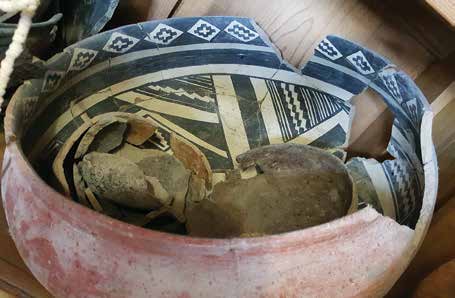The Conservancy was gifted an 80-acre parcel containing the Kipp Ruin, a multi-component prehistoric community located on the floodplain of the Mimbres River, in Southwest New Mexico. The site was first recorded by archaeologists in the early 1900s.
Kipp is located at the eastern edge of the Mimbres region, the northern edge of the Casas Grandes region, and the western edge of the Jornada Mogollon region, and the site has a post A.D. 1200 component that appears to have evidence of all three cultures, including Salado polychrome pottery. Saving A Multicultural Site The Kipp Ruin contains evidence of several Southwest cultures. Kipp also has pithouse structures that appear to date from 100 B.C to A.D. 1000. The site’s long occupation span may help archaeologists better understand the development and interaction of these three Southwestern cultures.
William Walker of New Mexico State University conducted field schools at Kipp beginning
in 2006. Most of the site’s cultural deposits have been buried under mud and silt deposited by Mimbres River flooding through the years. Walker believes the thick layer of mud and silt has preserved major portions of the Kipp Ruin and that a majority of its structures and features may still be intact. The site was donated to the Conservancy by Rexann Kipp Leary, who inherited the property from her father, Rex Kipp, a prominent New Mexico rancher.
Summary. Read complete article in American Archaeology, Summer 2016 | Vol. 20 No. 2.




